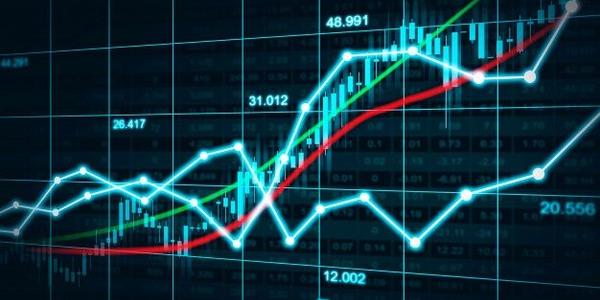South Korea’s sovereign wealth fund is signaling a clear shift toward technology and early-stage innovation, signaling a broader strategy to deepen exposure to artificial intelligence and other disruptive technologies. Led by longtime investment veteran Park Il Young, Korea Investment Corp (KIC) plans to raise allocations to tech startups and venture capital (VC) funds, while expanding its footprint in alternative assets to bolster long-term returns. The moves include a renewed interest in China’s tech scene, alongside continued bets on AI across both private and public markets. This strategic pivot aims to balance the fund’s conservative risk profile with a more aggressive stance on high-growth sectors that could drive mid- to long-term performance.
Strategic tilt toward tech and AI
KIC, which now manages about US$206.5 billion in assets, is reallocating more capital toward alternative investments to enhance overall portfolio returns. This shift encompasses increased engagement with early-stage technology firms through direct investments and VC fund commitments, with a deliberate emphasis on companies at the forefront of AI development and deployment. The fund’s leadership indicates a deliberate move away from a heavy reliance on traditional asset classes toward innovative tech opportunities that may offer outsized returns over the long run.
In parallel with its venture exposure, KIC is actively pursuing opportunities along the AI value chain. This broad scope includes not only consumer-facing AI applications, but also the underlying infrastructure that powers AI ecosystems. Specifically, executives cited data centers as a critical infrastructure layer, along with energy infrastructure that supports rising power demand from AI workloads. Core technologies—ranging from semiconductor capabilities to software platforms—and end-use applications are all on the radar, reflecting a holistic approach to benefiting from AI-driven transformation across multiple domains.
This renewed emphasis on startups and VC funds is framed by a recognition that early access to promising technological trends can translate into meaningful long-term returns. Park Il Young has emphasized that the fund seeks to pair a forward-looking investment horizon with an awareness of market volatility, aiming to capture structural growth rather than merely reacting to near-term swings. The strategy is presented as a counterweight to episodic market movement, aligning with a broader belief in durable secular trends that could sustain higher growth in technology-related sectors.
AI momentum in public markets and across the value chain
In addition to private-market bets, KIC plans to bolster its public-market positioning in AI and technology shares. The executive briefings indicate a concerted effort to ride the momentum of AI-enabled growth in listed equities, leveraging the fund’s sizable U.S. exposure as a cornerstone of this strategy. The U.S. market has long been a primary focus for KIC, and today roughly two-thirds of its public equity portfolio is concentrated there. This regional tilt reflects a belief in the continued strength of the U.S. tech sector, particularly among leading players at the tech forefront.
Among the fund’s top holdings in public equities are heavyweight positions such as a multi-billion-dollar stake in Nvidia and a substantial position in Microsoft, underscoring an emphasis on premier technology platforms and semiconductor leadership. These holdings, listed at US$3.1 billion and US$2.7 billion respectively, illustrate how KIC’s public-market bets align with the broader AI and cloud-computing ecosystem. While these positions are cited as key holdings, the fund also maintains indirect exposure through other investment vehicles, which diversify risk across the tech landscape.
The emphasis on the AI value chain is intended to be complementary to private-market activity. By coupling strategic stakes in leading public AI franchises with targeted private investments in early-stage AI-enabled companies, KIC seeks to create synergies between mature platforms and disruptive startups. This approach is designed to capture both the immediate value in established AI leaders and the long-tail growth potential of innovative entrants that could become the next generation of technology giants.
Leadership, strategy, and a long-term orientation
Park Il Young, who took the helm as chief executive officer in September of the previous year, brings a distinctive set of experiences that shape KIC’s current direction. Before joining KIC, Park served as an executive director at the World Bank, where he built expertise in renewable energy—a sector that aligns with KIC’s broader focus on green power as AI accelerates global energy demand. His leadership also includes a period of engagement with Korea’s startup ecosystem, providing him with firsthand exposure to how venture capital and platform startups are financed and scaled in the early stages.
Park’s background in renewable energy and his time supporting Korea’s startup environment have contributed to a vantage point that blends policy awareness with market-driven investment instincts. He has observed how venture capital firms tend to fund platform startups in their earliest stages, underscoring the importance of early-stage exposure in identifying the region’s potential technology champions. This perspective informs KIC’s willingness to allocate capital to venture opportunities that could translate into durable competitive advantages for Korea’s tech economy.
The CEO has been forthright about balancing long-term growth with risk considerations. He notes that while short-term volatility is a feature of global markets, the emphasis remains on identifying structural growth drivers that can outpace cyclical fluctuations. Park’s emphasis on long-horizon thinking is paired with a recognition that U.S. market strength—especially in technology—could persist, providing a favorable backdrop for KIC’s strategic bets on AI and related technologies. This framing helps justify the fund’s increased commitment to venture capital, data-center infrastructure, and other AI-enabled assets as part of a disciplined, multi-year perspective.
KIC’s governance and performance narrative also feature continuity with its growth trajectory. Since its founding two decades ago with initial capital of US$1 billion, the fund has expanded its assets under management to US$206.5 billion as of the end of 2024. In this period, KIC posted an annualized return of 4.75%, a figure that has sparked discussion among lawmakers and observers who compare it with the performance of peers. Notably, Norway’s sovereign wealth fund, Norges Bank Investment Management, reported a 13% return last year, contrasted with KIC’s 8.49% in the same period. These comparisons frame ongoing debates about optimization and the pace of improvement in Korea’s sovereign fund performance.
The leadership narrative also touches on differentiation and ambition. While KIC’s direct exposure to startups and VC investments remains relatively small and not disclosed as a standalone line item within its private-equity portfolio, the strategic signal is clear: the fund intends to deepen its commitment to early-stage innovation. Park has highlighted the fund’s strong network in Silicon Valley through its San Francisco office as a platform to access high-potential startups and early-stage rounds. This geographic and network strength is part of a broader plan to augment the fund’s ability to identify and secure favorable investment opportunities at the frontier of AI and related technologies.
China exposure and strategic considerations
Park sees China’s technology sector as “promising” and is actively seeking opportunities there, albeit with a careful approach. Currently, KIC’s exposure to Chinese tech stocks is largely through passive benchmark tracking, but the fund is considering a more active stance given the sector’s rapid ascent. This could entail shifting some weight toward selective Chinese tech equities or related investment structures that could offer higher conviction and potentially higher returns, while maintaining a calibrated risk posture.
The investment case for China is tempered by notable challenges. Park acknowledged the complexity of investing in the Chinese market amid intensifying U.S.–China rivalry and ongoing macroeconomic uncertainties. He described the environment as “a little tricky and complicated,” noting that tensions between the two major economies are likely to persist in the near term. Despite this, he indicated a willingness to explore opportunities within a disciplined framework, balancing potential upside with the geopolitical and economic risks inherent to the market.
This careful stance aligns with KIC’s broader philosophy of pursuing strategic advantages where feasible while maintaining resilience in the face of geopolitical dynamics. The fund’s leadership has signaled that any Chinese exposure would be pursued with a clear investment thesis, risk controls, and alignment with Korea’s broader economic and strategic objectives. The nuanced view reflects a calculated approach to a complex global tech landscape, where China’s scale and speed of AI and hardware development remain pivotal to the global AI ecosystem.
Market positioning, performance benchmarks, and risk considerations
A prominent feature of KIC’s current strategy is its emphasis on maintaining a strong U.S. market footprint. The U.S. market remains the most significant focal point for the fund, with a substantial share of both public equity holdings and strategic investments tied to American technology leaders. The fund’s top-draw holdings include Nvidia and Microsoft, underscoring a concentration in AI-enabled platforms, cloud computing, and related software ecosystems. These big-name positions reflect a conviction in the enduring leadership of U.S. technology giants that define AI-driven productivity and innovation.
In discussing performance and expectations, Park cited a preference for focusing on long-term growth potential and structural trends rather than reacting to near-term volatility. This outlook underpins the bid to broaden exposure to AI across the value chain—from foundational technologies to data centers and energy infrastructure—so that the fund can capture a wider array of growth drivers. The decision to allocate more capital to startups and VC funds complements this public-market emphasis by targeting the early-stage innovations that feed the next wave of AI-enabled products and services.
The fund’s performance metrics and peer comparisons continue to inform its strategic choices. While KIC’s annualized return of 4.75% since inception marks a stable performance record, it has faced scrutiny in terms of relative performance against peers. Critics, including lawmakers, have pointed to the gap between KIC’s returns and those achieved by other sovereign wealth funds, such as Norway’s Norges Bank Investment Management, which posted stronger results in recent periods. Such benchmarks inform ongoing discussions about governance, portfolio construction, and the pace of strategic evolution within Korea’s sovereign fund landscape.
Park’s leadership also emphasizes the importance of building a robust network to support venture investments. With a San Francisco office serving as a hub for connections to Silicon Valley’s startup ecosystem, KIC is positioned to access high-potential opportunities early in their lifecycle. This presence complements the fund’s public-market bets and provides a pipeline through which innovative, early-stage AI companies may be identified and nurtured, contributing to potential outperformance over time.
The broader context: competition, risk, and policy alignment
In a global context, KIC’s strategic direction sits at the intersection of competitive positioning among sovereign wealth funds and the evolving risk landscape of technology investing. The emphasis on AI, data centers, and related infrastructure aligns with broader trends in which sovereign funds aim to diversify away from traditional assets and into sectors with higher growth potential and strategic significance. The fund’s tilt toward venture capital and private equity complements this by seeking to access early-stage innovations that could yield outsized long-term gains, albeit with inherently higher risk and longer time horizons.
Risk management remains a critical component of this strategy. The emphasis on long-term structural growth suggests a tolerance for asymmetry in the timing of returns, recognizing that venture investments can take years to mature. The nuanced stance on China indicates an attempt to balance potential upside in access to Chinese tech breakthroughs with the geopolitical and macroeconomic risks that accompany investments in a high-stakes market. This approach seeks to preserve capital while positioning the portfolio to benefit from disruptive technologies as they scale.
The ongoing assessment of performance against global peers will continue to shape KIC’s decisions. The fund’s governance framework and oversight mechanisms will determine how quickly it can adjust allocations and respond to emerging opportunities or risks. As AI and related technologies continue to mature, KIC’s strategy will likely evolve further to align with both national economic objectives and the shifting dynamics of international technology markets.
Leadership background and strategic vision
Park Il Young’s leadership is a central thread running through KIC’s strategic recalibration. His prior role at the World Bank, with its emphasis on renewable energy and infrastructure, provides a lens through which he views AI’s rising energy demand and the broader sustainability imperative associated with technology-driven growth. This background informs a broader investment thesis in which AI and renewable energy converge to create a future where digital and physical infrastructure co-evolve to support resilient, low-emission growth.
Park’s earlier experience supporting Korea’s startup ecosystem, including a stint to bolster early-stage ventures, also informs his belief in the importance of venture capital as a driver of innovation. By combining hands-on insights into how startups scale with the macroeconomic and policy environment, Park seeks to position KIC as a partner capable of identifying and nurturing high-potential technology firms that can become the backbone of Korea’s AI-driven economy.
The leadership’s forward-looking emphasis is complemented by a disciplined awareness of market dynamics. Park has acknowledged the complexity of investing in China, especially given geopolitical tensions and macroeconomic uncertainty. His approach reflects a careful balance between pursuing emerging opportunities in one of the world’s largest AI markets and maintaining prudent risk controls to safeguard Korea’s public investments. This balanced stance is intended to ensure KIC’s portfolio remains robust and adaptable in an ever-changing global tech landscape.
Conclusion
Korea Investment Corp’s latest strategic direction signals a deliberate move to enhance exposure to AI and related technologies through a broader commitment to tech startups, venture capital, and alternative assets. The fund’s leadership emphasizes a long-term growth orientation, prioritizing structural trends over short-term volatility while maintaining a strong U.S. market footprint and selective consideration of opportunities in China. Park Il Young’s background in renewable energy and startup ecosystems, combined with a proactive stance on AI value-chain investments, shapes a disciplined yet ambitious plan to boost mid- to long-term performance. As KIC navigates the balance between opportunity and risk in a rapidly evolving tech landscape, its approach highlights the ongoing evolution of sovereign wealth funds as they seek to align strategic economic objectives with the transformative potential of AI and digital infrastructure.




